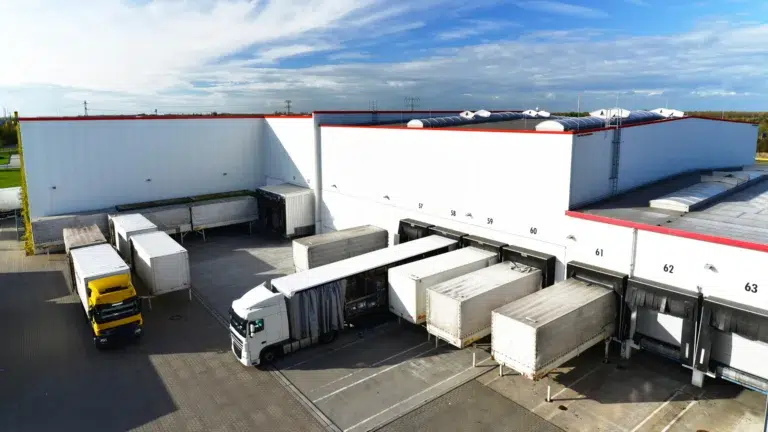Lean supply chain integration refers to streamlining the entire supply chain process by eliminating waste, optimizing resources, and focusing on delivering maximum value to the customer. While it offers significant advantages, implementing a lean supply chain comes with its own set of challenges. Let’s explore the benefits, challenges, and best practices of lean supply chain integration in a way that helps you implement it effectively.

What is Lean Supply Chain Integration?
Lean supply chain integration focuses on reducing inefficiencies and maximizing value across the entire supply chain, from sourcing raw materials to delivering finished products. It emphasizes:
- Just-in-time (JIT) production: Producing only what is needed, when it’s needed.
- Eliminating waste: Removing any activity or process that doesn’t add value.
- Continuous improvement: Making small but continuous improvements to refine processes over time.
[dock_monitor_app]
Key Benefits of Lean Supply Chain Integration
1. Reduced Waste
Lean supply chains aim to eliminate all forms of waste, such as:
- Excess inventory
- Overproduction
- Unnecessary transportation
By reducing these inefficiencies, companies can streamline operations and focus on what truly adds value.
Example: A global automotive company implemented a just-in-time (JIT) inventory system, reducing excess inventory by 15% and freeing up warehouse space for critical operations.
2. Improved Efficiency
Lean supply chains promote continuous improvement. By optimizing processes, businesses can:
- Reduce production times
- Speed up delivery
- Meet customer demand more effectively
Fact: Companies that implemented lean supply chain processes reported an average increase in operational efficiency of 20-30%.
3. Cost Reduction
Minimizing waste, reducing inventory levels, and improving efficiency directly lead to lower operating costs.
Example: A consumer goods company saved 10% annually in logistics costs after reducing transportation inefficiencies and streamlining its supplier network using lean principles.
4. Enhanced Collaboration
Lean supply chain integration encourages collaboration between suppliers, manufacturers, and customers. This leads to better:
- Demand forecasting
- Accurate inventory management
- Fewer disruptions
Example: A tech manufacturer improved supplier relationships through lean integration, leading to 25% fewer order errors and more accurate demand forecasts.
5. Improved Customer Satisfaction
Lean supply chains help companies respond more quickly to customer needs, reducing delays and stockouts. This leads to higher customer satisfaction and increased customer loyalty.
Fact: Companies using lean supply chain principles see a 30-50% improvement in on-time delivery rates, which contributes to better customer retention.
Key Challenges of Lean Supply Chain Integration
Lets look into few Key Challenges of Lean Supply Chain Integration
1. Resistance to Change
One of the biggest challenges in lean supply chain integration is internal resistance. Employees may be hesitant to change established processes, especially if they don’t fully understand the benefits of lean.
Solution: Implement a strong change management strategy that includes:
- Clear communication of lean benefits
- Training programs
- Fostering a culture of continuous improvement
2. Demand Uncertainty
Lean supply chains rely on accurate demand forecasting. However, unexpected fluctuations can lead to stockouts or overproduction, disrupting lean systems.
Solution: Invest in demand planning tools and maintain close collaboration with suppliers and customers to forecast more accurately. Building some flexibility into your system can help mitigate these risks.
3. Limited Inventory Buffers
Lean supply chains minimize inventory to reduce waste. However, this can backfire if demand spikes unexpectedly or if suppliers experience delays.
Solution: Use strategic safety stock for critical items and diversify suppliers to reduce reliance on a single source. Implement just-in-case planning where necessary, especially for high-risk items.
4. Supplier Adaptation
Lean supply chains often require suppliers to adapt to new production schedules and continuous improvement practices. Some suppliers may struggle with these changes, causing bottlenecks.
Solution: Build strong partnerships with suppliers and clearly communicate expectations. Conduct regular performance audits to ensure suppliers can meet lean standards.
5. Technology and Data Integration
To succeed with lean, businesses need robust technology to track and optimize processes in real-time. Companies without the right tools may find it difficult to effectively implement lean principles.
Solution: Invest in supply chain management software and real-time data analytics tools. These tools help you track inventory, production, and demand trends to make better decisions.
Best Practices for Implementing Lean Supply Chain Integration

1. Focus on Continuous Improvement
Lean supply chain integration is not a one-time initiative. It requires a culture of continuous improvement, where employees are encouraged to find inefficiencies and propose solutions regularly.
Example: A large retail company implemented a Kaizen approach (continuous improvement), which led to a 20% improvement in operational efficiency over time.
2. Collaborate with Key Stakeholders
Collaboration is essential for lean supply chain success. Work closely with suppliers, partners, and customers to ensure everyone is aligned with lean goals and processes.
3. Leverage Technology
Technology plays a crucial role in lean supply chains. Invest in:
- Automation tools
- Real-time data analytics
- Inventory management systems
These tools can help businesses track inventory in real-time, reduce manual errors, and make data-driven decisions to improve efficiency.
Example: A global electronics manufacturer adopted an AI-powered inventory system, reducing excess stock by 15% and improving order accuracy by 20%.
4. Develop an Agile Supply Chain
While lean focuses on minimizing waste and inventory, agility emphasizes flexibility and responsiveness. Combining lean with agility ensures your supply chain can adapt to changes while remaining efficient.
Quantitative Data to Support Lean Integration
According to the Lean Enterprise Research Centre, up to 60% of activities in a typical manufacturing operation add no value. Implementing lean can eliminate many of these non-value-adding activities, driving efficiency and reducing waste. Additionally, companies that integrate lean principles typically see inventory reductions of 50% or more, while order-to-cash cycles shorten by 35-50%.
Conclusion
Integrating lean supply chain principles offers many benefits, including reduced waste, cost savings, and improved efficiency. However, businesses must be mindful of challenges such as resistance to change, demand uncertainty, and supplier adaptation. By focusing on continuous improvement, collaboration, and technology adoption, companies can successfully implement lean supply chain integration and achieve long-term success.
By fostering a culture of continuous improvement and leveraging the right technology, businesses can overcome the challenges and enjoy the many benefits lean supply chain integration offers.




